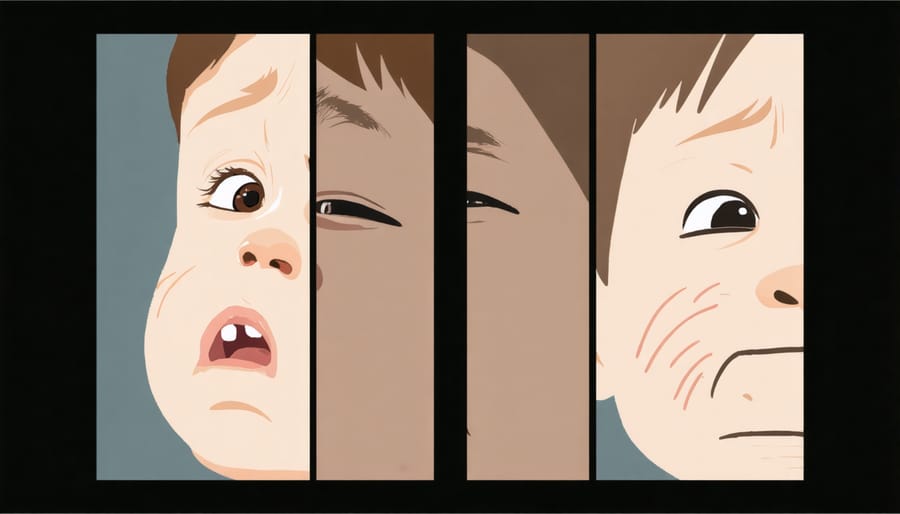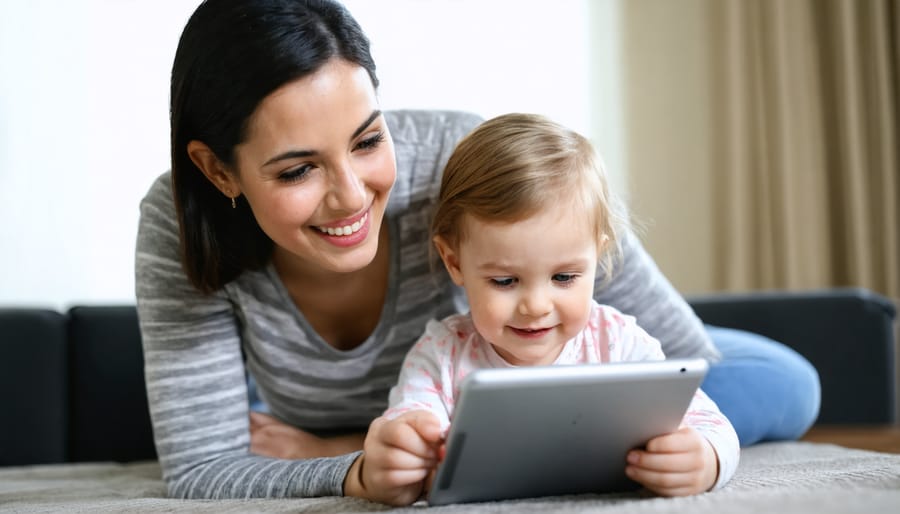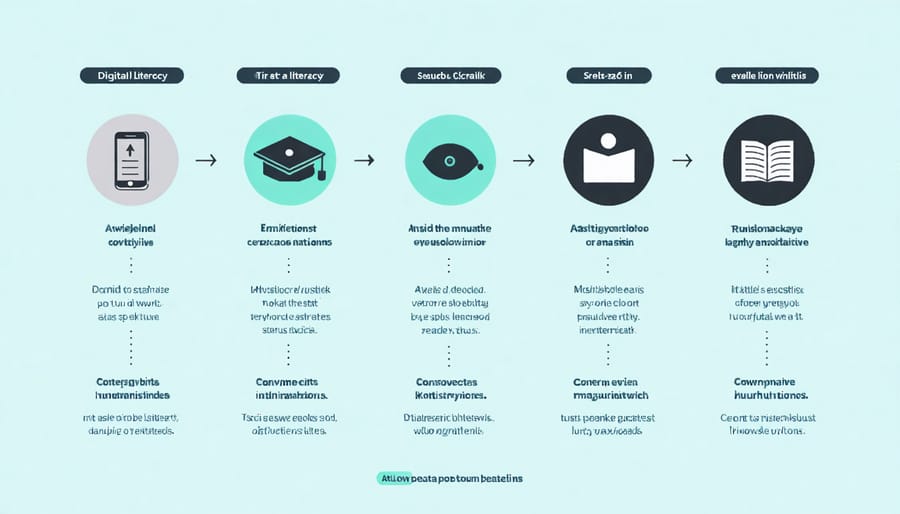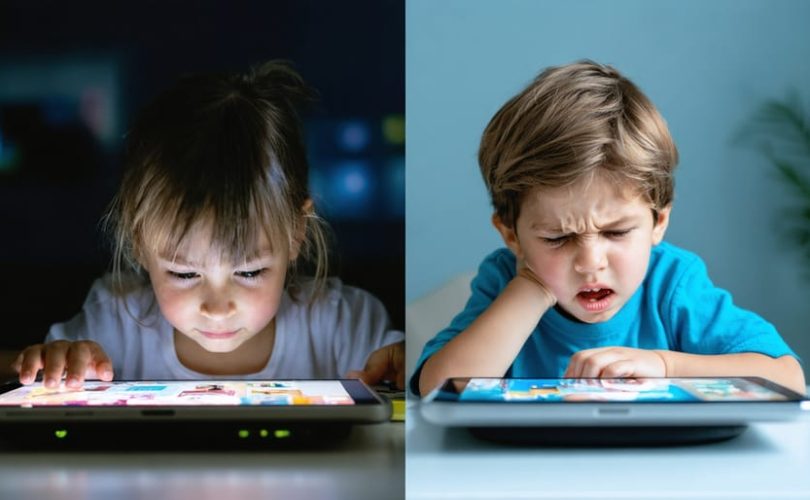In an era where screens dominate our children’s daily lives, the relationship between media violence and youth behavior has become a pressing concern for families and educators alike. Recent studies reveal that the average child consumes over 200,000 acts of media violence by age 18, raising urgent questions about its impact on developing minds.
Children today navigate a complex digital landscape where violent content appears in video games, social media, movies, and even cartoons. While past generations worried about television violence, today’s youth face an unprecedented level of exposure across multiple platforms and devices, often with more graphic and realistic depictions than ever before.
The effects of this exposure aren’t just theoretical – researchers have documented clear links between regular consumption of violent media and increased aggressive behavior, desensitization to real-world violence, and heightened anxiety in young people. However, understanding these influences empowers parents and caregivers to take positive action.
This reality doesn’t mean we need to unplug our children completely. Instead, it calls for thoughtful engagement with media, strategic limitations, and open conversations about what they’re experiencing. By understanding how media violence affects young minds, we can better protect our children while helping them develop healthy relationships with digital content.
How Media Violence Affects Young Minds

Short-term Effects on Behavior
Research consistently shows that children may exhibit immediate behavioral changes after consuming violent media content. Dr. Sarah Chen, a child psychologist, notes that these short-term effects can manifest within minutes of exposure. Children might become more aggressive during play, use hostile language, or show decreased empathy toward others.
The impact of screen time containing violence can trigger heightened arousal levels, leading to restlessness and difficulty settling down for regular activities. Parents often report their children mimicking fighting moves or repeating aggressive phrases they’ve seen in media, even during innocent play sessions.
Many children also show increased anxiety or fearfulness immediately after viewing violent content. For example, eight-year-old Tommy started checking under his bed and keeping lights on after watching an action movie with mild violence. These immediate reactions typically stem from children’s developing ability to distinguish fantasy from reality.
It’s important to note that not all children react the same way. Some might become withdrawn or quiet, while others might express their discomfort through physical complaints like stomach aches or headaches. These behavioral changes often resolve within hours or days, but consistent exposure can lead to longer-lasting effects.
Understanding these immediate reactions helps parents and caregivers respond appropriately and create healthier viewing habits for their children.
Long-term Impact on Mental Health
Research shows that prolonged exposure to media violence can have lasting effects on children’s mental health well into adolescence and adulthood. Dr. Sarah Chen, a child psychologist with over 20 years of experience, explains, “The way visual content affects mental well-being goes beyond temporary emotional responses – it can shape a child’s worldview and coping mechanisms.”
Children regularly exposed to violent media may develop anxiety, depression, and heightened stress responses. These effects often manifest in subtle ways: difficulty sleeping, increased irritability, or challenges in managing everyday conflicts. Some children might become desensitized to real-world violence or develop a heightened fear of their environment.
Maria, a mother of two, shares her experience: “We noticed our 11-year-old becoming increasingly anxious after playing certain video games. Working with a counselor helped us understand the connection and develop healthier media habits.”
The good news is that these effects aren’t inevitable. Early intervention and mindful media consumption can help protect children’s mental health. Creating open dialogues about media content, setting appropriate boundaries, and providing alternative activities can help build resilience. Remember, every child responds differently to media exposure, and it’s essential to pay attention to individual reactions and adjust accordingly.
Support from family, educators, and mental health professionals can help children process and cope with media violence exposure, leading to better long-term outcomes.
Recognizing Warning Signs
Behavioral Changes to Watch For
Parents should stay alert for several key behavioral changes that might indicate their child is being negatively affected by media violence. One of the most common signs is increased aggressive behavior, such as pushing, hitting, or using threatening language with siblings or peers. Children may also begin to act out violent scenes they’ve watched or show less empathy toward others who are hurt or upset.
Watch for changes in sleep patterns, including nightmares or resistance to bedtime, which could stem from anxiety about violent content they’ve been exposed to. Some children might become more fearful of the world around them, showing reluctance to go to certain places or expressing worry about bad things happening to them or their loved ones.
Pay attention if your child becomes desensitized to real-world violence, showing little emotional reaction to news of actual violent events. Other concerning signs include increasingly hostile language, a preference for violent games or shows over previously enjoyed activities, and difficulty distinguishing fantasy from reality.
Remember that every child responds differently to media exposure, and these changes often develop gradually. If you notice several of these signs consistently, it’s worth having a conversation with your child and consulting with their pediatrician.
When to Seek Professional Help
While some exposure to media violence is common, certain behavioral changes warrant professional attention. If your child shows increased aggression, has persistent nightmares, becomes socially withdrawn, or displays unusual anxiety after consuming violent media, it’s important to seek comprehensive mental health care.
Watch for signs like mimicking violent acts from media, becoming desensitized to real-world violence, or expressing thoughts about harming others. These behaviors, especially when combined with academic struggles or relationship difficulties, indicate a need for professional intervention.
Trust your parental instinct. If you notice significant personality changes, sleep disturbances, or your child seems preoccupied with violent themes, consult a child psychologist or mental health professional. They can assess whether media violence is contributing to deeper emotional issues and provide appropriate support.
Remember, seeking help early can prevent more serious problems from developing. Many children benefit from professional guidance in processing media content and developing healthy coping mechanisms. School counselors can often provide initial support and referrals to specialized services when needed.

Creating a Healthy Media Environment
Age-Appropriate Content Guidelines
Understanding content ratings is crucial for managing children’s media exposure. Parents and educators can use established rating systems like those from the Entertainment Software Rating Board (ESRB) for video games and the Motion Picture Association (MPA) for movies as helpful starting points in making informed decisions.
When selecting media content, consider not just the age rating but also your child’s individual maturity level and sensitivity to certain themes. What might be appropriate for one eight-year-old could be overwhelming for another. Pay attention to content descriptors that indicate the presence and intensity of violent elements.
Dr. Sarah Chen, child psychologist, recommends: “Preview content whenever possible, especially for younger children. Watch the first few episodes of a show or play through the initial levels of a game to understand the context of any violence present.”
Create a family media plan that establishes clear guidelines about acceptable content. Involve children in age-appropriate discussions about why certain content might not be suitable for them. This helps develop their critical thinking skills and understanding of media consumption.
Consider these practical steps:
– Use parental controls on devices and streaming platforms
– Research content reviews from trusted sources
– Watch media together when possible
– Choose content that emphasizes problem-solving and positive conflict resolution
– Balance media consumption with other activities
Remember that gradual exposure to more mature content, when developmentally appropriate, can help children build resilience and media literacy skills.
Setting Healthy Boundaries
Creating healthy boundaries around media consumption is essential for protecting your child’s well-being. Start by establishing clear, age-appropriate rules about when and what type of content your children can access. For example, you might designate specific times for media use, such as after homework is completed, and set limits on daily screen time.
Dr. Sarah Thompson, a child psychologist, recommends creating a “media contract” with your children. “When children participate in creating their own media guidelines, they’re more likely to follow them,” she explains. This contract can include agreements about appropriate content ratings, time limits, and consequences for breaking the rules.
Consider implementing practical strategies like:
– Keeping screens out of bedrooms
– Setting up parental controls on devices
– Creating designated “screen-free” times during meals and before bedtime
– Monitoring media content regularly
– Discussing violent content when it appears
Remember to lead by example. Children often model their parents’ behavior, so demonstrating healthy media habits yourself is crucial. Be consistent with enforcing boundaries while remaining open to discussion about why certain limits exist.
If your child pushes back against these boundaries, stay calm and remind them that these rules exist to keep them safe and healthy. Regularly review and adjust your family’s media guidelines as your children grow and their needs change.
Alternative Media Options
Instead of completely restricting media access, parents and educators can guide children toward enriching alternatives that promote positive values and healthy development. Educational programming that emphasizes problem-solving, cooperation, and empathy can help children develop crucial social skills. Look for shows and games that celebrate diversity, showcase peaceful conflict resolution, and encourage creative thinking.
Many streaming platforms now offer dedicated kids’ sections with age-appropriate content. PBS Kids, for example, provides high-quality educational programming that entertains while teaching valuable lessons. Documentary series about nature, science, and history can spark curiosity and learning without relying on violent content.
Interactive educational games and apps can engage children while developing their cognitive skills. Many of these programs incorporate storytelling, puzzles, and collaborative challenges that make learning fun. Consider media that encourages physical activity, such as dance games or virtual sports.
Creative apps that allow children to make their own stories, art, or music can channel their energy into productive expression. Family movie nights featuring uplifting films can become meaningful bonding experiences while modeling positive values.
Remember to actively participate in your child’s media consumption by watching and playing together, discussing content, and helping them process what they see. This engagement helps develop critical thinking skills and strengthens your connection with them.
Supporting Your Child’s Mental Well-being
Open Communication Strategies
Starting an open dialogue about media violence with children can be challenging, but it’s essential for helping them process what they see and develop critical thinking skills. When you notice your child has been exposed to violent content, create a safe space for discussion by asking open-ended questions like “How did that scene make you feel?” or “What do you think about what happened?”
Make these conversations a regular part of your routine, perhaps during family meals or car rides. Listen without judgment and validate their feelings, even if you disagree with their views. Share your own thoughts and concerns in age-appropriate ways, explaining why certain content might be inappropriate or unrealistic.
Use real-world examples to help children understand the difference between media violence and reality. For instance, you might explain how stunt performers use special effects, or how conflicts can be resolved without violence in everyday life.
When children share their media experiences, stay curious and engaged. Ask questions about their favorite shows or games, and help them identify positive and negative elements. This approach helps build media literacy skills while maintaining trust and open communication.
Remember to establish family media guidelines together, making it a collaborative process rather than imposing strict rules. This partnership approach helps children feel heard and respected while learning to make thoughtful choices about their media consumption.
Building Digital Literacy
In today’s digital landscape, helping children develop critical thinking skills about media content is essential. Rather than simply restricting access, teaching children to analyze and question what they see empowers them to become discerning media consumers.
Start by watching content together and asking open-ended questions: “How do you feel about what happened?” or “Do you think this would happen in real life?” These conversations help children distinguish between fantasy and reality while developing their analytical skills.
Encourage children to identify the consequences of violent actions in media. When characters use violence, discuss alternative ways conflicts could have been resolved. This helps children understand that violence isn’t the only – or best – solution to problems.
Create a “media evaluation toolkit” with your child. Include questions like: “Who created this content?”, “What’s the message?”, and “How does it make me feel?” This framework helps children actively process media rather than passively consuming it.
Dr. Sarah Chen, a child psychologist, suggests: “When children learn to critically evaluate media, they’re less likely to be negatively influenced by violent content. They become active participants in their media consumption rather than passive receivers.”
Remember to praise children when they demonstrate critical thinking about media content. This positive reinforcement helps establish lasting habits of thoughtful media consumption that will serve them well throughout their lives.

As we’ve explored, media violence can significantly impact our youth, but there’s hope in taking positive action. By actively monitoring content, engaging in meaningful discussions with children about what they see, and promoting alternative activities, we can help create a healthier media environment for young minds. Remember, small changes make a big difference – whether it’s establishing media-free times, choosing age-appropriate content, or modeling responsible media consumption ourselves. Working together as parents, educators, and community members, we can help children develop a balanced relationship with media while protecting their emotional well-being. Let’s focus on empowering our youth with media literacy skills and supporting their healthy development in an increasingly digital world. The future of our children’s mental health depends on the thoughtful choices we make today.







